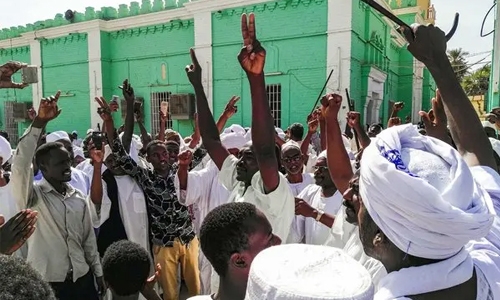Saudi site, long seen as haunted, tries to woo visitors
In a remote northern corner of Saudi Arabia sit the relics of an ancient civilization, which the kingdom hopes to turn into a global tourism destination as it tries to open up to the world and diversify its economy away from oil. Backed by billions of dollars in state-led investment and a French cultural partnership, the authorities expect al-Ula and its majestic rock-hewn tombs of Madain Saleh could eventually attract millions of visitors, local and foreign alike.
That is generating excitement in the kingdom, while upending a superstition among many Saudis - and long-backed by religious edicts - that the area is haunted by jinn, the malevolent spirits of the Koran and Arabian mythology, and must be avoided. Al-Ula’s development is part of a push to preserve pre-Islamic heritage sites in order to attract non-Muslim tourists, strengthen national identity and temper the austere strain of Sunni Islam that has dominated Saudi Arabia for decades.
Madain Saleh, a UNESCO World Heritage site located there, is a 2,000-year-old city carved into desert rocks by the Nabate - ans, the pre-Islamic Arab people that also built Petra in neighbouring Jordan. Elaborately carved multi-storey facades with epigraphs inscribed into the red sandstone give way to internal chambers where bodies were once laid to rest. At night, stars twinkle in the vast desert sky.
Superstition about the site can be traced back to a hadith, or saying attributed to the Prophet Mohammad, warning Muslims not to enter “unless you are crying ... lest you suffer the affliction” of its people, said to have perished for their sins. While interpretation of that passage is nowadays contested, Saudi state-backed clerics had referenced it for years. In 2012, one of them ruled that al-Ula should be opened to the public, but even years later a school in the area was temporarily closed after students sighted jinn, local media reported.
“JUST GETTING STARTED”
During a media tour, residents refused to speak about the area’s reputation for being jinxed, instead focusing on opportun i t i e s to make money and welcome visitors. Locals are planning to open restaurants and shops, and a few hundred young people have been sent abroad to study hospitality. As conservative Saudi Arabia loosens social restrictions, some of the tour guides in al-Ula will be women. “The local community is peaceful, educated and hospitable,” said resident Talal al-Faqir. “The crown prince ... has paved the way for the entire world to visit us and see the huge civilizations in our region.
We are just getting started.” In Crown Prince Mohammed bin Salman’s headlong push to transform Saudi Arabia’s economy and society, al-Ula has gained prominence. He has ridden dune buggies through its sands and invited Western investors and celebrities for helicopter tours of the area, which abuts NEOM, the $500-billion mega-city he wants to build along the Red Sea. Many of the visitors to al-Ula during an ongoing winter music festival are VIPs or well-heeled guests, with ticket prices reaching several thousand dollars.
Visas were arranged on an ad hoc basis. Riyadh native Dana Daham visited last month with friends, taking a train from Jeddah to Medina and then a 300-km (180- mile) car ride. “We didn’t expect it to be this magnificent. We keep hearing stories from people but this is way more than we thought it would be,” she said. “It’s amazing, it’s beautiful. So much history, so much going on.” The weekend she visited featured a concert by the hologram of the late Egyptian diva Umm Kulthum. Italian tenor Andrea Bocelli performed a few days later and Greek singer Yanni is also expected, alongside Arab stars such as Kadim al-Saher and Mohamed Abdo.
Related Posts

